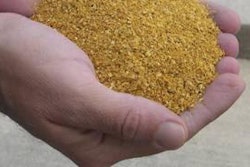The U.S. Department of Agriculture has a basic idea of how soybean producers and the feed industry responded to challenges brought on by drought, supply shortage and higher prices in 2012, but the agency is seeking more specific details.
That’s why the USDA’s National Agricultural Statistics Service and Economic Research Service are in the midst of the annual Agricultural Resource Management Survey. Trained interviewers will visit thousands of farmers across the U.S. to collect information about their operating costs and farm-related income. Each year the survey focuses strongly on one agricultural commodity, and in 2013 it is soybeans. The last time soybeans were highlighted was in 2006, according to USDA senior agricultural economist Mitch Morehart.
“The whole feed complex is an interesting story because of the impact of the drought,” said Morehart, who is responsible for the survey’s development and management. “As far as we can tell, it introduced some new behaviors and changes in practices. That is what we are going to measure when we collect this data. Did people find alternative feed sources? Did people sell animals earlier? How did they adapt and change in response to not only feed costs, but feed shortages? Was there a shift from production to certain parts of the country and away from other sides of the country? That’s why this survey is important, to find these things out. We have models that forecast what we think happened last year, but the actual measurement of what happened will occur right now when we collect the information from these surveys.”
The survey, which is being jointly conducted with the Census of Agriculture, takes a look at the overall economic well-being of farmers, and their practices in soil management, fertilizer usage and water management practices, as well as responses to grain markets, and prices of fuel and fertilizer. Other key questions deal with acreage planted and crop rotations. The information will be used in a variety of research and statistical reporting. Once tabulated, it will provide the data that represents agriculture in the gross domestic product estimates.
Morehart also says the statistics from this survey can have an impact on farm legislation. Information such as estimates of the cost to produce an acre or a bushel of soybeans, and how those costs vary by region or size of farm, play an important role in the policy-making process. “It’s really critical when there are a lot of policy decisions being made, that these decisions are made based on the facts or the events as we see them,” said Morehart. “There are a lot of concerns now about appropriate safety nets. This data informs a lot of these policy proposals.”
The results of the survey can also help people connected to agriculture, such as equipment dealers and bankers, make financial decisions, he said. Typically, the Agricultural Resource Management Survey gets about a 70 percent participation rate among producers contacted. For a complex financial survey, Morehart said, that’s a pretty high rate.
The survey will be conducted through April. After that, the data is prepared in the early summer months. Information will first be released in the USDA’s Farm Production Expenditures report during the first week of August, and more details will be released at the end of August in the Farm Income Estimates report.

















